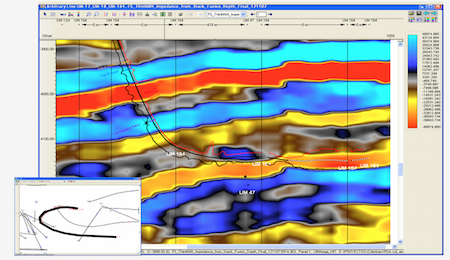ThinMAN™
Reservoir geophysics today gives drilling engineers more thorough "road maps" of the subsurface to develop and carry out the best well planning with the lowest risk. In addition, the logging while drilling tools give an updated the earth model.
SIGMA³ incorporates a workflow that uses proprietary technologies to develop an industry-leading interpretation of 3D seismic data to give you an unparalleled reservoir description so you can drill with confidence. Our reservoir geophysics solution toolkit includes:
- Volumetric curvature
- Spectral imaging
- Pre-inversion/inversion
- Seismic analysis
- Petrophysical analysis
- Reservoir engineering
- Integrated interpretation
The process starts with a thorough analysis of the geological framework by incorporating a complete petrophysical analysis of available well control into an earth model. This analysis includes a proprietary fluid substitution method that estimates the seismic response from different fluids in the reservoir as gas, oil and brine in reservoir pore space has been demonstrated to show different acoustic responses. The different fluid scenarios are modeled for their spectral decomposition and AVO response. Acoustic Impedance is used to discriminate different lithologies from the log response. This petrophysical analysis and modeling process develops calibration criteria for evaluating seismic attributes that are derived from the SIGMA3 tool kit, such as spectral decomposition, spectral inversion, AVO, multi-attribute inversion and neural network inversion.
The seismic data are conditioned with more SIGMA³ proprietary tools, including amplitude-friendly Radon noise suppression and AVO attribute based residual velocity programs. The resulting improved data quality gives better subsurface predictions of potential net-sand and net-pay, plus a better description of the path to the reservoir. Spectral decomposition and pseudo density from multi-attribute inversions are calibrated with well logs to give lithological and hydrocarbon predictions.
Pseudo impedance and reflectivity derived from SIGMA³ high-resolution spectral inversion, ThinMAN™, are used to provide a better structural and stratigraphic subsurface description. The high-resolution velocity analysis coupled with geo-statistical technologies incorporating well ties to seismic interpretations develop more accurate time-to-depth conversions that provide a robust framework for a more accurate forecast of the reservoir penetration points.
These more accurate depth converted volumes have proved to show more detailed features than were previously observed in typical time volumes.














